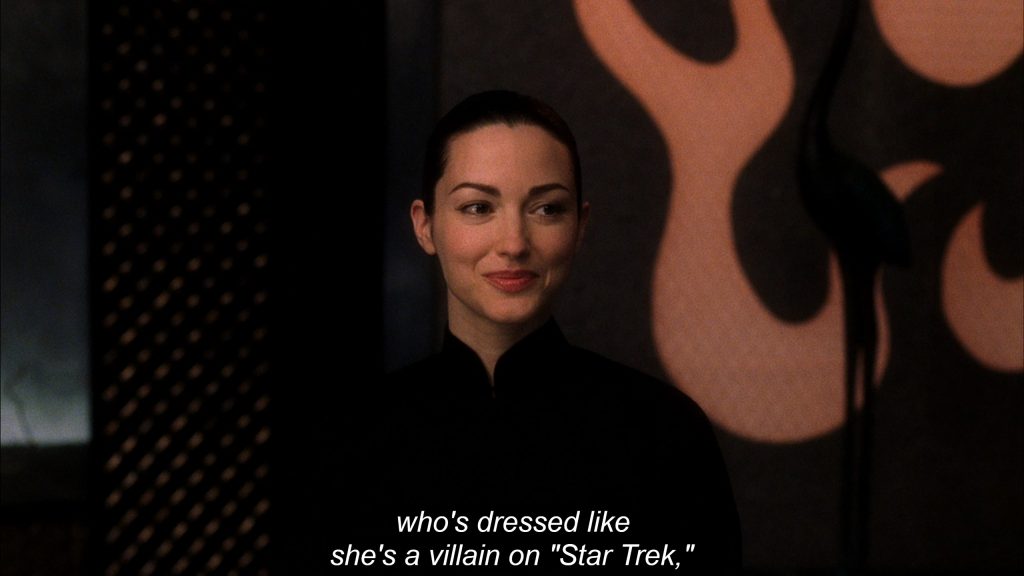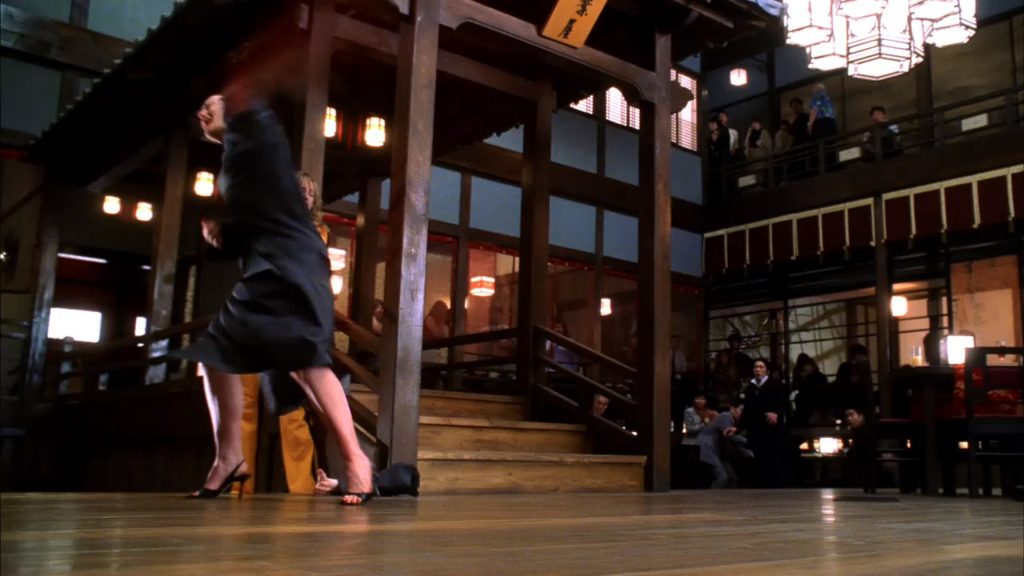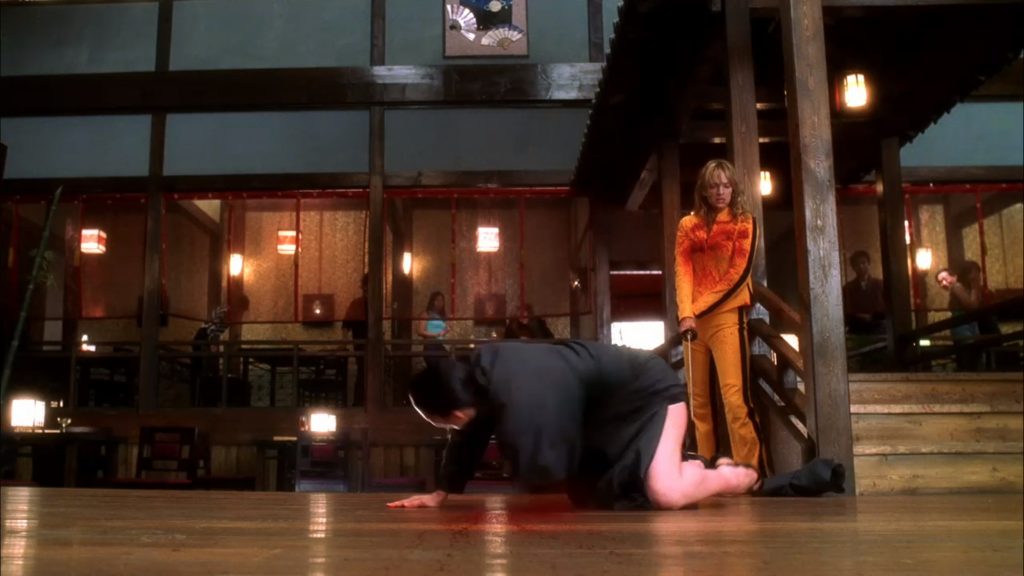Erika Hernandez describes Quentin Tarantino as a “video store-clerk ‘film geek’ turned legitimate cinema Auteur”. With this description, Hernandez establishes that Tarantino is using his immaturity to make mature movies. Her usage of the term “geek” and emphasis on his “video store-clerk” past emphasize Tarantino’s social and (past) professional immaturity. In making this point, Hernandez takes advantage of a societal association between immaturity and pop-culture fandom. The popularity of the epithet “fanboy” concisely demonstrates the prevalence of this connection.
Kill Bill: Vol. 1 thinks hard about the association between immaturity and pop culture. Between rapid-fire pop-culture Easter eggs, the film deals with the loss of immaturity. The Bride literally loses her child, and many characters lose their innocence. The film considers the capacity of pop culture to revive childhood in the midst of adult violence.
In voiceover, The Bride introduces Sofie Fatale to viewers as “that pretty lady to O-ren’s right, who’s dressed like she’s a villain on ‘Star Trek'”.

With the “pretty lady” description, The Bride seems to target her narration at immature men. “Pretty” and “lady” are basic, juvenile terms. The “Star Trek” reference speaks to fans of the show. By including the “pretty lady” and “Star Trek” comments in the same sentence, the film suggests that the Venn diagram of immature men and Star Trek fans is a circle. At the least, the film suggests that The Bride believes this.
When she is first shown, Sofie is poised. Her hair is in a tight bun, her clothing matches the background, and she is acting: she smiles without her eyes. After getting her arm detached, she loses some composure.

Like a baby, she loses control of her stance and bodily fluids. The shot from below emphasizes her high heels as she begins to fall.

Upon reaching the ground, Sofie takes on the hand and knees position of a toddler. Her dress has moved to expose her thighs. With the loss of her left arm, Sofie loses her dignity and maturity. This sequence suggests that violence encourages immaturity. This suggestion counters the popular concept that children exposed to violence will “grow up fast,” yet supports the popular vision of violent media “holding back” fanboys. While violence is rated “M for Mature,” lovers of violent media are labelled “immature.”
By connecting violence and immaturity, Kill Bill comments on succession. Questions of succession constantly arise in the series: Will The Bride replace Bill as top killer? Will Elle replace The Bride as top female killer? Will the Western action film replace the Eastern? And so on. It seems less likely for an immature child to grow up and replace its parents. With violence, one can kill one’s rival or merely emphasize their immaturity, thus complicating their coming of age.
